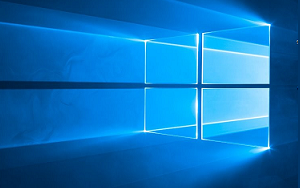Archiving emails in Gmail helps users manage their inbox effectively by moving messages to the 'All Mail' section without deleting them. This process keeps your inbox clutter-free while retaining access to important emails.
Introduction to Email Archiving in Gmail
Managing emails efficiently is crucial in today's digital age, where communication is predominantly conducted via email. Gmail, one of the most popular email services globally, offers a convenient feature known as archiving. Archiving emails in Gmail allows users to keep their inbox organized by moving emails out of sight into the 'All Mail' section without deleting them. This feature is particularly useful for maintaining a clutter-free inbox while ensuring important emails remain accessible.
What is Email Archiving?
Email archiving is a process of moving emails from the inbox to a designated storage area within the email system. In Gmail, archiving moves the emails to the 'All Mail' section, which contains all emails except those in the Trash or Spam folders. Archived emails are not deleted and can be retrieved anytime.
Benefits of Archiving Emails
- Organized Inbox: Keeps the inbox tidy by moving less frequently accessed emails out of the main view.
- Easy Retrieval: Archived emails are still accessible and searchable, ensuring important information is never lost.
- Storage Management: Helps manage storage effectively without needing to delete emails to free up space.
- Privacy and Security: Archived emails are protected under the same privacy and security settings as other emails in Gmail.
How to Archive Emails in Gmail
Archiving a Single Email
- Open Gmail and sign in with your credentials.
- Navigate to your inbox.
- Locate the email you wish to archive.
- Hover over the email. A set of icons will appear on the right.
- Click the Archive icon, represented by a box with a downward arrow. The email will be moved to the 'All Mail' section.
Archiving Multiple Emails
- Open Gmail and log in to your account.
- Go to your inbox.
- Select the checkbox next to each email you want to archive.
- Once selected, click the Archive icon at the top of the page.
- The selected emails will be moved to the 'All Mail' section.
Archiving Emails Automatically
To automate the process of archiving certain types of emails, you can use Gmail's filter feature:
- Click the Settings gear icon and select See all settings.
- Navigate to the Filters and Blocked Addresses tab.
- Click Create a new filter.
- Set the criteria for the emails you want to archive automatically (e.g., emails from a specific sender).
- Click Create filter with this search.
- Check the option Skip the Inbox (Archive it).
- Click Create filter to apply.
Retrieving Archived Emails
To access archived emails, you can follow these steps:
- Open Gmail and sign in.
- In the left sidebar, click on More to expand the menu.
- Select All Mail from the list.
- Browse through the emails or use the search bar to locate a specific archived email.
Difference Between Archiving and Deleting
While both archiving and deleting remove emails from the inbox, they serve different purposes. Archiving moves the email to 'All Mail' without removing it permanently, allowing for future access. Deleting sends the email to the Trash, where it is permanently removed after 30 days unless restored beforehand.
Conclusion
Archiving emails in Gmail is a practical solution for managing email overload while retaining access to important messages. By using the archiving feature, users can maintain an organized inbox, manage storage effectively, and ensure no essential emails are lost. Understanding how to utilize this feature can significantly enhance your email management experience.







